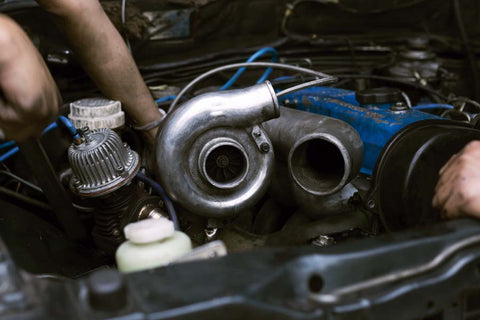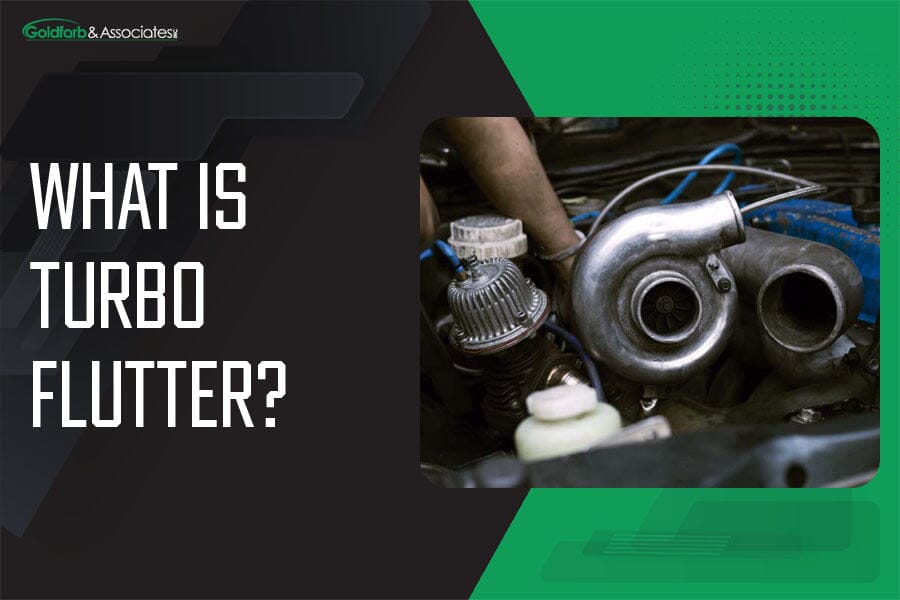If you’re passionate about cars, you probably have extensive knowledge about turbochargers. They’re vital components for anyone seeking a thrilling driving experience, as they act as potent amplifiers of engine power, harnessing exhaust gasses to significantly increase vehicle performance. Alongside enhancing power, their operation generates distinctive sounds and powerful noises most gearheads find adrenalizing. But what is turbo flutter, and more importantly, should you be worried about it?
For those who are just stepping into the world of car modification, turbo flutter might initially seem like an unheard-of phenomenon. Yet, as you dive deeper and gain a better understanding of what it actually is, you’ll quickly realize that turbo flutter is everywhere. Its distinctive sound will become a familiar symphony, symbolizing the shared passion and thrill among car enthusiasts, adding to the excitement and adrenaline of the driving experience.
Below, you’ll learn all about what is a turbo flutter!

Source: shutterstock.com / Photo Contributor: Comedstock
Understanding What Is Turbo Flutter
Turbochargers play a critical role in the power output and efficiency of a diesel engine, converting the energy contained in the exhaust stream and forcing air into the engine, which allows more fuel flow, translating into more power. Given the importance it has on engine performance and longevity when choosing a turbocharger for sale, it’s vital to purchase it from reputable and reliable sources to ensure optimal functionality.
But what is a turbocharger flutter, and what does it sound like?
With turbo spinning at very high revs, ranging from 80,000 thousand to 200,000 revolutions per minute, pressing the accelerator increases exhaust production and drives the turbo to higher RPMs. Thus, turbo flutter, also referred to as the compressor surge, is the sound when you step off the accelerator after reaching peak boost.
It produces a distinctive fluttering sound, often associated with a rapid series of “chirping” or “whooshing” noises, only slightly louder. Essentially, it’s the sound of the returning air being forced back through your turbo and chopping against the blades.
What causes turbo flutter
The flutter is the noise that occurs when the throttle body closes suddenly, creating a restriction in the intake manifold while the turbo continues to spin at high revolutions. With the throttle closed, the compressed air has nowhere to go but back toward the turbine blades in the turbocharger, colliding with the impeller in an effort to reduce their momentum, which can cause a fairly loud noise.
Characterized by its unique rhythm and underlying intensity, enthusiasts often describe it as an exhilarating experience, signifying the intricate interplay between the turbocharger and engine. We can say that this sound makes you feel the pulse of power under the hood, adding the extra thrill to every drive.
Effects of turbo flutter
So, is turbo flutter bad for the engine?
Car enthusiasts love turbo flutter. However, determining whether it poses inherent risks to your vehicle’s engine or components is not as simple as it may appear due to common misconceptions surrounding its effects.
As the flutter results from the excessive back pressure within the turbo, it can place a significant strain on its components. This means that creating the turbo flutter can lead to premature wear, as the turbo wasn’t initially engineered to endure such stress.
However, with innovation within the automotive industry, modern turbos are designed to withstand intensive and considerable pressure. Turbo flutter could potentially pose some strain on the turbo, affecting performance and creating some engine lag, which can have a negative impact on the throttle response. Yet, the wear caused by turbo flutter won’t cause any significant damage to your turbo’s lifespan or compromise the engine.
Distinguishing Turbo Flutter From Other Turbo Noises
Distinguishing turbo flutter noises from other sounds your turbocharger might make is essential for understanding the health and performance of your vehicle’s engine. Most misconceptions regarding turbocharger-related noises occur when comparing the flutter with compressor surges and wastegate sounds.
Unlike compressor surge, which occurs when the turbo’s compressor wheel stalls under high boost conditions, turbo flutter appears during deceleration when excessive air pressure is forced back through your turbo against the blades. Similarly, wastegate chatter is a common turbo noise that occurs when the wastegate valve rapidly opens and closes to regulate boost pressure, producing rapid chattering and ticking sounds.
How to Make Turbo Flutter
So, how to make your turbo flutter?
The simplest and easiest way to achieve any form of turbo flutter in a turbocharger is by removing the blow-off valve from your vehicle. Although no mechanic will advise this, if you have small, low-pressure turbos with low boost levels, you'll definitely have a chance against your turbo experiencing significant damage.
With the absence of a blow-off valve, you’ll ensure that the air intake has no smooth way to escape. Doing this will force backpressure, making the turbo flutter and creating that satisfying noise car enthusiasts know and love.
However, it’s important to note that this might damage your exhaust system, making it more prone to leaks and premature wear. You’d also be increasing engine load and reducing your system’s reliability in the long run. If you’re looking for the best turbo flutter that can also benefit your engine, a modified blow-off valve may be your best option.
How to Prevent Turbo Flutter
Essentially, there are three things you can consider if you’re not a fan of turbo flutter.
If you prefer a smoother engine performance without the unique turbo flutter noise, it’s advisable to either stick with the standard blow-off valve (BOV) or invest in one specifically designed to suppress noise. Their role is to open a different outlet and redirect excess pressure. Typically, aftermarket BOVs feature a method to adjust the softness or hardness of the spring, controlled by rubber diaphragms for regulating opening and closing mechanisms.
Another practical option for preventing turbo flutter is ensuring the airflow into the turbocharger is smooth. You can achieve this by using a larger diameter intake pipe to mitigate any obstructions in the airflow path or considering an alternative turbine blade design where they’re less susceptible to turbo flutter.
Finally, you can tune the engine to achieve a slightly leaner operation. By doing so, you will reduce the amount of airflow through your turbocharger and ultimately mitigate turbo flutter.

Source: shutterstock.com / Photo Contributor: BBRDRVN
Conclusion
What is turbo flutter? Turbo flutter is the result of excessive backpressure within the turbo system, forcing airflow to chop against the blades and causing relatively loud “chirping” or “whooshing” noises.
If you’re fond of the turbo flutter and want to experience the thrilling sounds during your cruising, ensuring a sufficient amount of backpressure and removing the blow-off valve can help achieve the desired effects. However, for those who want to avoid this sound, optimizing the engine, ensuring sufficient airflow, and opting for an optimal blow-off valve can mitigate the excessive pressure and reduce the likelihood of turbo flutter occurrences.
It’s important to note that even though turbo flutter may not pose initial harm to the vehicle, it could be damaging over time, leading to premature wear and reduced efficiency.



